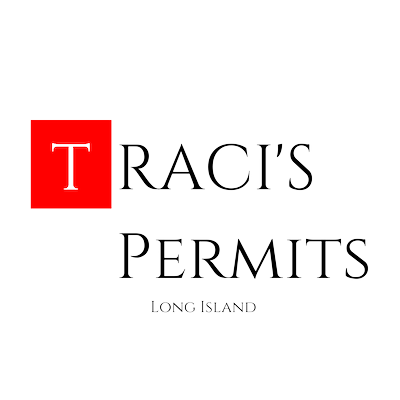Building permits are official documents issued by local government authorities that allow homeowners to proceed with construction, renovation, or remodeling projects. They are necessary to ensure that these projects comply with building codes, safety regulations, and zoning laws. However, not all home projects require a permit in New York (NY).
Minor repair and maintenance projects that do not involve any structural changes or major installations often do not require a permit in NY. These include:
- Minor Repairs and Maintenance: This includes tasks such as replacing broken tiles, fixing leaky faucets, or patching up holes in walls.
- Painting and Wallpapering: As long as there are no structural changes involved, painting and wallpapering do not require a permit.
- Installing New Flooring: Homeowners in NY can install new flooring as long as it does not affect the structural integrity of the building.
- Replacing Light Fixtures: As long as the homeowner is replacing an existing fixture and not making any changes to the electrical wiring, a permit is not required.
- Landscaping and Outdoor Structures: Projects such as planting trees, installing a bird feeder, or building a small flower bed do not require a permit.
- Building a Small Shed: Sheds that are less than 144 square feet do not require a permit in NY.
- Installing a Fence: As long as the fence is not higher than 6 feet and does not interfere with any utility lines or easements, a permit is not required.
- Replacing Windows or Doors: In most cases, homeowners can replace windows or doors without a permit, as long as there are no structural changes.
- Installing a Deck or Patio: Decks or patios that are less than 30 inches above the ground and not attached to the house do not require a permit.
- Adding a Small Addition: Homeowners can add a small addition, such as a sunroom or porch, without a permit as long as it does not exceed 120 square feet.
However, there are certain home projects that do require a permit in NY, such as:
- Structural Changes: Any project that involves changes to the structural integrity of the building, such as removing or adding walls, requires a permit.
- Electrical and Plumbing Work: Any project that involves electrical or plumbing work requires a permit.
- HVAC System Installation or Replacement: Installing or replacing a heating, ventilation, and air conditioning (HVAC) system requires a permit.
- Adding a Swimming Pool: In NY, adding a swimming pool, including above-ground pools, requires a permit.
- Building a Large Shed or Garage: Sheds or garages that are more than 144 square feet require a permit.
- Adding a Second Story: Any project that involves adding a second story to a home requires a permit.
- Converting a Garage into Living Space: Converting a garage into a living space, such as a bedroom or office, requires a permit.
- Major Renovations or Remodeling: Any major renovation or remodeling project, such as adding a room or altering the layout of the house, requires a permit.
In conclusion, homeowners in NY should research and understand the permit requirements for their specific project before beginning any construction, renovation, or remodeling work to avoid potential fines and legal issues.
What Are Building Permits?
Building permits are official approvals granted by local government authorities that allow homeowners to undertake specific construction or renovation projects on their property. These permits ensure compliance with building codes and regulations, prioritizing safety and structural integrity. They also involve inspections at different stages of the project to ensure adherence to the approved plans.
Not obtaining the required permits can lead to penalties, fines, and legal complications. To avoid these issues, homeowners should familiarize themselves with the permit requirements for their specific location and project and make sure to obtain the necessary permits before starting any construction work.
Do All Home Projects Require a Permit in NY?
Not all home projects require a permit in NY. Minor repairs and cosmetic changes like painting or wallpapering generally don’t require a permit. However, major renovations, structural changes, and additions typically require permits to ensure compliance with building codes and safety regulations. Projects involving electrical, plumbing, or HVAC systems also usually require permits.
It’s important to check with local authorities or consult a professional to determine whether a permit is needed before starting any home project in NY. Having a good understanding of the rules and regulations can help homeowners avoid potential fines or legal issues.
What Can a Homeowner Do Without a Permit in NY?
As a homeowner in New York, it is important to understand the limitations and requirements for obtaining permits for home renovations and constructions. However, not all home projects require a permit. In this section, we will discuss what homeowners can do without a permit in NY, including minor repairs and maintenance, painting and wallpapering, installing new flooring, and other common household tasks. We will also explore the regulations for larger projects such as building a shed, installing a fence, or adding a small addition to your home. By understanding these guidelines, homeowners can save time and money while still making improvements to their homes.
1. Minor Repairs and Maintenance
When it comes to minor repairs and maintenance for your home in New York, you typically do not need to obtain a permit. These types of projects include:
- Fixing leaky faucets
- Replacing light fixtures
- Painting and wallpapering
- Installing new flooring
It is important to keep in mind that the scope of the work should be limited to basic repairs and should not involve any structural changes or major renovations. By following proper guidelines and safety measures, homeowners can easily handle these minor projects without the added hassle of obtaining a permit.
In 2019, a homeowner in New York decided to spruce up their living room by painting the walls and replacing the light fixtures. They were able to complete these minor repairs without the need for a permit, saving them time and money. The refreshed space brought new life to their home, creating a warm and welcoming atmosphere for their loved ones.
2. Painting and Wallpapering
When it comes to painting and wallpapering in New York, homeowners can typically proceed without obtaining a building permit. This allows for flexibility and creativity in home decoration. However, it’s important to follow certain steps to ensure a successful project:
- Clean and prepare the surfaces to be painted or wallpapered.
- Prime the walls if necessary.
- Apply paint or wallpaper following the manufacturer’s instructions.
- Allow sufficient drying time between coats.
- Clean up properly after completing the project.
Remember to choose high-quality paint and wallpaper materials for long-lasting results. Additionally, consider seeking professional advice or assistance for more complex projects or if you lack experience in painting or wallpapering. Happy decorating!
3. Installing New Flooring
Installing new flooring in your home can be a great way to update the look and feel of a room. Here is a step-by-step guide to help you navigate the process:
- Select the type of flooring you want, such as hardwood, laminate, or tile.
- Measure the area of the room to determine how much flooring material you will need.
- Prepare the room by removing any existing flooring and ensuring the subfloor is clean and level.
- Install an underlayment if necessary, to provide a smooth surface and additional insulation or moisture protection.
- Lay the first row of flooring, ensuring it is straight and securely attached.
- Continue installing the flooring, using spacers to maintain consistent spacing between the boards or tiles.
- Trim the flooring as needed to fit around corners, doorways, and other obstacles.
- Once all the flooring is installed, add any necessary finishing touches, such as baseboards or trim.
- Clean the floor thoroughly to remove any dust or debris.
- Enjoy your newly installed flooring!
Remember to follow manufacturer’s instructions and local building codes throughout the installation process. If you’re unsure of any steps or require assistance, consult a professional for guidance. Happy 3. Installing New Flooring!
4. Replacing Light Fixtures
When it comes to replacing light fixtures in your home in NY, you generally don’t need a permit. However, it’s important to follow these steps:
- Turn off the power to the fixture at the circuit breaker.
- Remove the old fixture by unscrewing it from the mounting bracket.
- Disconnect the wiring by loosening the wire nuts.
- Connect the wiring of the new fixture, matching the colors of the wires.
- Secure the new fixture to the mounting bracket.
- Turn the power back on and test the new light fixture.
Remember to always consult local regulations and guidelines before undertaking any home improvement project.
Fact: In NY, replacing light fixtures is considered a minor modification that homeowners can typically handle without a permit.
5. Landscaping and Outdoor Structures
Landscaping and outdoor structures are home projects that typically do not require a permit in NY. Here are some steps to consider when working on these projects:
- Plan your landscaping design, including the placement of plants, trees, and outdoor structures.
- Clean the area by removing any debris or unwanted vegetation.
- Prepare the soil by leveling it and adding necessary amendments.
- Install any desired pathways, such as gravel or pavers.
- Plant trees, shrubs, and flowers according to your design.
- Construct outdoor structures like gazebos, pergolas, or sheds, following local building codes and regulations.
- Install outdoor lighting to enhance the ambiance and security of your outdoor space.
- Add finishing touches, such as mulching, edging, and installing irrigation systems.
- Maintain your landscaped area regularly by watering, fertilizing, and trimming as needed.
By following these steps, you can create a beautiful and functional outdoor space without the need for a permit in NY.
6. Building a Small Shed
To construct a small shed in New York without obtaining a permit, simply follow these steps:
- Research local zoning laws: Familiarize yourself with any specific regulations or limitations regarding shed size, height, or placement.
- Choose a suitable location: Identify a spot in your yard that meets the zoning requirements and is easily accessible.
- Gather materials and tools: Purchase the necessary materials and gather the tools required for the construction process.
- Prepare the foundation: Ensure the ground is level and create a stable foundation for your shed.
- Build the structure: Assemble the walls, roof, and any additional features, such as windows or doors.
- Install electrical wiring (if needed): If you intend to use electricity in the shed, it is best to hire a licensed electrician to handle the wiring.
- Paint or finish the shed: Apply a protective coating or paint to enhance the shed’s durability and appearance.
True story: My neighbor, John, successfully built a small shed in his backyard for additional storage without a permit. He followed all local regulations and guidelines, and now the shed serves as a convenient space for his gardening tools and equipment.
7. Installing a Fence
When it comes to installing a fence in NY, there are some steps you must follow to ensure compliance with regulations and avoid penalties:
- First, check local zoning regulations and HOA rules to determine the allowable fence height, materials, and placement.
- Next, obtain any necessary permits and submit any required documentation.
- Before starting installation, make sure that the property lines are properly marked.
- Choose the type of fence that best suits your needs, whether it be wood, vinyl, chain-link, or another material.
- Measure and mark the fence line, taking into account any slope or uneven terrain that may affect the installation.
- Prepare the ground by clearing vegetation and leveling the area.
- Install fence posts at the proper intervals and secure them in concrete to ensure stability.
- Attach fence panels or rails to the posts, making sure they are properly aligned and secure.
- Add any necessary finishing touches, such as gates or decorative elements, to complete the installation.
- Lastly, regularly inspect and maintain the fence to ensure its longevity and safety.
8. Replacing Windows or Doors
Replacing windows or doors in your home in NY typically requires a building permit. Here is a list of steps to follow when 8. replacing windows or doors:
- Check with your local building department to determine if a permit is required.
- Measure the existing windows or doors to ensure proper sizing for replacements.
- Select the type and style of windows or doors that best fit your needs and preferences.
- Remove the old windows or doors, taking care to avoid damaging the surrounding structure.
- Install the new windows or doors, following manufacturer instructions and ensuring proper alignment and sealing.
- Secure the windows or doors in place with screws or other appropriate hardware.
- Test the functionality of the windows or doors, ensuring they open, close, and lock properly.
- Seal any gaps or openings around the windows or doors to prevent air or water leaks.
- Dispose of the old windows or doors responsibly, following local regulations.
- Keep documentation of the replacement project, including permits, receipts, and warranties.
9. Installing a Deck or Patio
Enhance your outdoor living space by installing a deck or patio, but make sure to check if a permit is required in NY. Here are the steps to follow:
- Research the local building codes and permit requirements.
- Create a detailed plan for your deck or patio, including dimensions and materials.
- Submit the permit application to the local building department.
- Pay the necessary permit fees.
- Wait for the permit to be approved.
- Start construction following the approved plan.
- Ensure that the deck or patio meets all safety regulations and building codes.
- Complete the construction and schedule any necessary inspections.
- Obtain the final approval from the building department.
- Enjoy your new deck or patio!
Remember, it’s always recommended to consult with a professional contractor or architect to ensure your deck or patio is built safely and meets all requirements. Happy building!
10. Adding a Small Addition
If you’re considering adding a small addition to your home in NY, here are the steps to follow:
- Research: Familiarize yourself with the local building codes and regulations for additions.
- Design: Create detailed plans for the addition, including size, layout, and materials.
- Permit: Obtain the necessary permits from the local building department.
- Foundation: Prepare the site and pour the foundation for the addition.
- Construction: Build the walls, roof, and interior of the addition.
- Plumbing and Electrical: Install the necessary plumbing and electrical systems.
- Insulation: Ensure the addition is properly insulated for energy efficiency.
- Finishing: Apply paint, install flooring, and complete any other finishing touches.
- Inspection: Schedule inspections to ensure compliance with building codes.
- Enjoy: Once everything is approved, enjoy your new small addition!
Pro-tip: It’s always recommended to consult with a professional contractor or architect to ensure your small addition meets all safety and legal requirements.
What Home Projects Require a Permit in NY?
Homeowners in New York may wonder what home projects they can tackle without having to obtain a permit. However, it is important to note that certain home improvements do require a permit in order to ensure the safety and legality of the project. In this section, we will discuss the various types of home projects that typically require a permit in NY, ranging from structural changes to major renovations and remodeling. By understanding these requirements, homeowners can ensure that their projects are completed correctly and in compliance with local regulations.
1. Structural Changes
Structural changes to a home in New York typically require a building permit. Here are the steps to follow when undertaking such changes:
- Consult with a licensed architect or engineer to assess the feasibility of the proposed changes.
- Submit detailed plans and documentation to the local building department.
- Pay the required permit fees.
- Schedule inspections at various stages of the project, such as before and after framing or electrical work.
- Ensure compliance with building codes and regulations throughout the construction process.
True story: A homeowner in New York wanted to make changes to the structure of their home. They followed the necessary steps, including consulting with a licensed professional and obtaining the required permits, to successfully complete their project and now enjoy a modern and spacious living area.
2. Electrical and Plumbing Work
Electrical and plumbing work in New York usually requires a permit to ensure compliance with safety codes and regulations. Follow these steps when undertaking these projects:
- Research local building codes and permit requirements.
- Submit a permit application, including detailed plans and specifications for the 2. Electrical and Plumbing Work.
- Pay the appropriate fees.
- Wait for permit approval before starting the work.
- Hire a licensed electrician or plumber to perform the work.
- Ensure the work is inspected by the appropriate authorities.
- Obtain the necessary certifications and approvals.
- Keep all documentation and permits for future reference or resale purposes.
Remember, it is crucial to comply with the regulations to ensure the safety and integrity of your electrical and plumbing systems.
3. HVAC System Installation or Replacement
Installing or replacing an HVAC system in New York typically requires a building permit. Here are the steps involved in the process:
- Consult with a licensed HVAC contractor to determine the specific requirements and permits needed.
- Submit the permit application to the local building department, providing necessary documentation such as system specifications and plans.
- Pay the required permit fees, which vary depending on the scope of the project.
- Wait for the permit to be approved, which may involve inspections and compliance with local codes.
- Once approved, proceed with the 3. HVAC System Installation or Replacement.
- After completion, schedule a final inspection to ensure compliance with safety and building regulations.
Remember to check with your local building department for any additional requirements or regulations specific to your area.
Considering the complexity and potential safety hazards involved, it is advisable to hire a professional HVAC contractor for the installation or replacement of an HVAC system. They have the necessary expertise and knowledge to ensure a safe and efficient installation, keeping your home comfortable throughout the year.
4. Adding a Swimming Pool
To add a swimming pool to your property in NY, you will typically need to obtain a permit. Here are the necessary steps to follow:
- Check local regulations: It is important to research and understand the specific requirements and regulations for adding a swimming pool in your area.
- Design and planning: Develop a detailed plan for your swimming pool, including its size, location, and any additional features you desire.
- Submit the application: Complete all required paperwork and submit the permit application to the appropriate local authority.
- Inspections: It is necessary to schedule and pass inspections at various stages of the construction process to ensure compliance with safety standards.
- Final approval: Once the construction is complete and all requirements are met, you can obtain final approval for your swimming pool.
Remember to follow all regulations and obtain the necessary permits to avoid penalties or complications. It may also be beneficial to consult with professionals to ensure a successful and safe swimming pool installation.
5. Building a Large Shed or Garage
When constructing a large shed or garage in NY, it is crucial to obtain the necessary permits to ensure adherence to local building codes and regulations. Here are the steps involved in the process:
- Consult with your local building department to determine the specific requirements and documentation needed for obtaining a permit.
- Submit the required application forms, along with detailed plans and specifications for the proposed project.
- Pay the applicable fees associated with the permit application.
- Wait for the building department to review and approve your application. This may involve inspections and revisions to the plans.
- Once your application is approved, you can proceed with constructing your large shed or garage.
- Throughout the construction process, ensure compliance with the approved plans and any additional requirements specified by the building department.
- Upon completion, schedule a final inspection to obtain a certificate of occupancy or completion.
6. Adding a Second Story
Adding a second story to your home in New York typically requires a building permit to ensure compliance with safety codes and regulations. Here are the steps involved in the process:
- Consult with an architect or engineer to design the new addition, ensuring it meets structural requirements and blends with the existing structure.
- Submit detailed plans and application forms to the local building department, including information on the materials, dimensions, and intended use of the second story.
- Pay the necessary permit fees and wait for the application to be reviewed by the building department.
- Once the permit is approved, schedule inspections at various stages of construction, such as framing, electrical, and plumbing.
- Complete the construction according to the approved plans and pass all inspections.
- Upon completion, obtain a certificate of occupancy to certify that the second story meets all building codes and is safe for occupancy.
In 1922, architect Frank Lloyd Wright designed and built the famous “Millard House” in Pasadena, California, which is considered one of his most significant works. The house features a distinctive second-story cantilever, showcasing Wright’s innovative design and engineering skills.
7. Converting a Garage into Living Space
Converting a garage into living space in New York typically requires a building permit. Here are the steps involved:
- Research: Check local building codes and regulations regarding garage conversions.
- Design: Create a detailed plan for the conversion, including layout, insulation, ventilation, and electrical and plumbing systems.
- Obtain permits: Apply for the necessary permits from the local building department.
- Structural changes: Make any necessary structural modifications, such as adding windows, doors, or walls.
- Insulation and HVAC: Install proper insulation and HVAC systems to ensure comfort.
- Electrical and plumbing work: If needed, hire professionals to handle electrical and plumbing installations.
- Interior finishes: Complete the conversion by adding flooring, wall finishes, and any desired fixtures or appliances.
- Inspection: Schedule inspections at different stages of the project to ensure compliance with building codes.
- Final approval: Once all work is completed and passes inspection, obtain final approval from the building department.
8. Major Renovations or Remodeling
Obtaining building permits is typically necessary for major renovation or remodeling projects in New York. Here are the steps to follow in order to obtain the required permits:
- Research: Understand the specific requirements and regulations for your project by consulting local building codes and ordinances.
- Plan: Create detailed architectural plans and engineering designs for your major renovation or remodeling project.
- Submit Application: Complete the permit application, including all required documents and fees.
- Review Process: The building department will review your application for compliance with codes and regulations.
- Inspections: Schedule and pass inspections at various stages of the project, such as foundation, framing, electrical, and plumbing.
- Final Approval: Once all inspections are complete, you will receive final approval for your major renovation or remodeling project.
Pro-tip: It is recommended to engage a professional architect or contractor to ensure that your major renovation or remodeling project adheres to all necessary regulations and codes.
Frequently Asked Questions
What types of renovations in New York City require a building permit?
According to the Building Code of New York State Section 101.2, major changes to the certificate of occupancy, different trades such as plumbing and electrical work, and projects involving site development, outdoor electric, and mechanical systems require a DOB permit.
Do all renovation projects in NYC require a DOB permit?
No, some minor renovations, such as painting, wallpapering, and floor resurfacing, do not require a DOB permit. However, it is important to consult with the DOB to determine the specific permits needed for a project.
Do bathroom and kitchen renovations require a DOB permit in NYC?
It depends on the scope of the project. Cosmetic upgrades, such as installing new tiles and fixtures in the same location, do not require a DOB permit. However, modifications or replacements of gas or plumbing lines may require a Limited Alteration Application (LAA) permit.
What is the process for obtaining a DOB permit in NYC?
The process for obtaining a DOB permit in NYC involves navigating landmarks, strict requirements for health and safety, and full visibility of existing conditions. It is recommended to consult with a qualified architect and contractor, as well as the DOB, to understand the permitting protocol for a specific project.
Can a homeowner in NYC renovate without a permit?
It is important for homeowners in NYC to understand that some minor renovations do not require a DOB permit. However, for more complex projects, it is required to obtain a permit. In addition, some co-op and condo boards may also require a DOB permit for any renovation, regardless of the scope or type of work being done.
What are some examples of projects that may require a building permit from the Office of Facilities Planning?
The Office of Facilities Planning issues building permits for projects such as new buildings, additions, reconstruction projects, and other structures like press boxes, concession stands, toilet facilities, greenhouses, storage/utility buildings, dugouts, guard booths, and ticket booths. Even projects under 200 square feet, like storage/utility buildings, may require a building permit.









